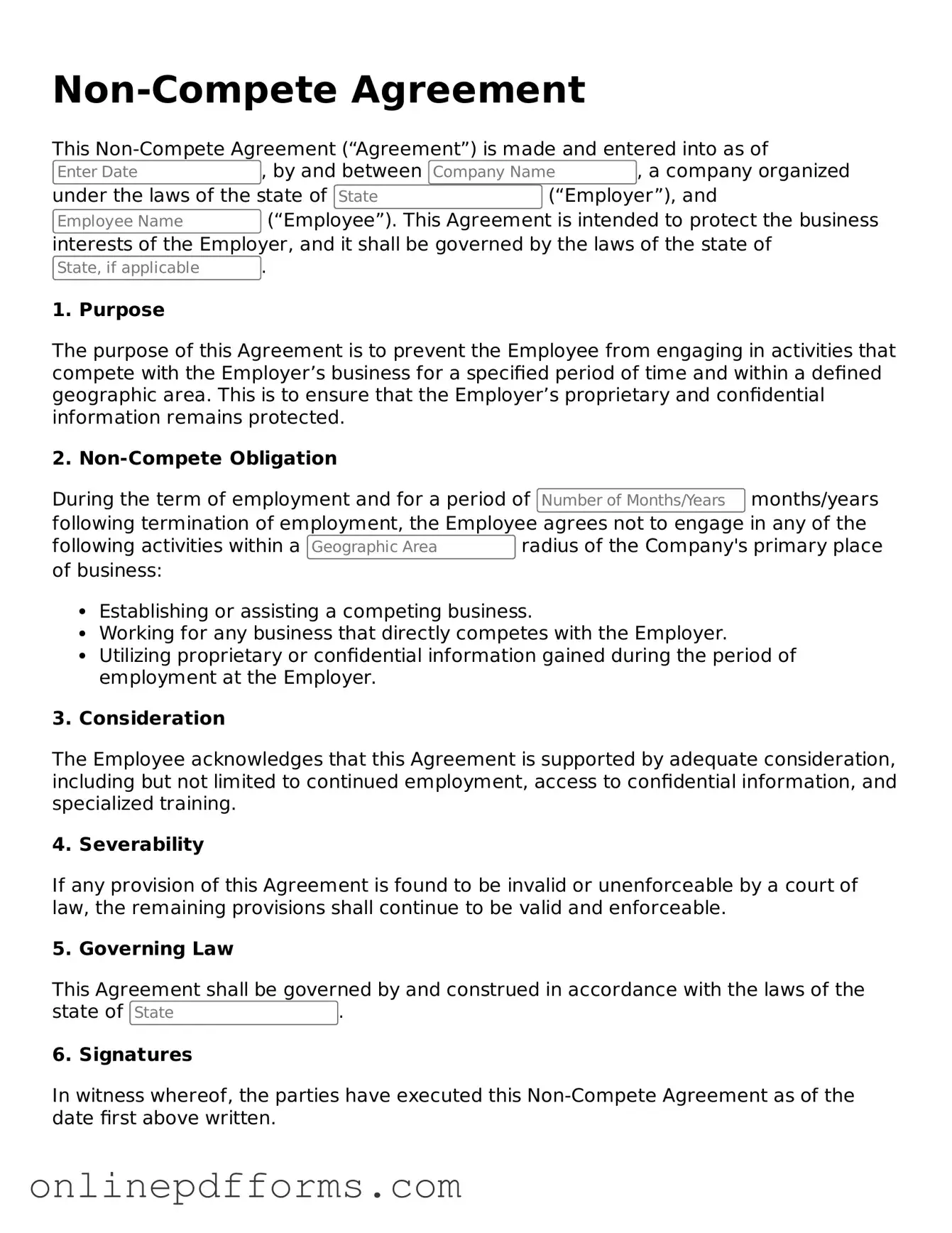A Non-disclosure Agreement (NDA) is similar to a Non-compete Agreement in that both documents protect sensitive information. While a Non-compete Agreement restricts an individual from working with competitors after leaving a job, an NDA prevents the sharing of confidential information obtained during employment. Both aim to safeguard a company's proprietary information, ensuring that former employees do not divulge trade secrets or business strategies.
A Non-solicitation Agreement is another document that shares similarities with a Non-compete Agreement. This type of agreement prohibits an employee from soliciting clients or employees of the company after their departure. While a Non-compete Agreement restricts employment opportunities with competitors, a Non-solicitation Agreement focuses on maintaining the company’s relationships and preventing former employees from taking clients or colleagues with them.
Employment Agreements often include clauses that resemble Non-compete Agreements. These contracts outline the terms of employment, including job responsibilities, salary, and duration of employment. They may also contain provisions that restrict an employee's ability to work for competitors post-employment, serving to protect the employer's interests in a similar way to a Non-compete Agreement.
Confidentiality Agreements also share characteristics with Non-compete Agreements. Both documents aim to protect a company’s intellectual property and sensitive information. A Confidentiality Agreement specifically focuses on preventing the sharing of confidential information, while a Non-compete Agreement restricts future employment opportunities to protect the company’s market position.
A Partnership Agreement can resemble a Non-compete Agreement when it includes clauses that limit partners from engaging in competing businesses. Such agreements are designed to protect the interests of all partners involved by ensuring that no one partner diverts business opportunities to a competing venture, similar to how a Non-compete Agreement protects an employer from losing talent to competitors.
Franchise Agreements often contain Non-compete clauses that restrict franchisees from operating competing businesses within a certain geographic area. This helps maintain the brand's integrity and market share, much like a Non-compete Agreement does for employees. Both types of agreements ensure that the business interests of the franchisor or employer are safeguarded against competition.
Trade Secret Agreements are closely aligned with Non-compete Agreements as they both focus on protecting valuable business information. A Trade Secret Agreement specifically addresses the safeguarding of proprietary processes, formulas, or practices. In contrast, a Non-compete Agreement prevents individuals from using that information to benefit a competing business after leaving the organization.
Consulting Agreements can also include Non-compete provisions. When a consultant is hired, the company may require them to agree not to work with competitors during and after the consulting period. This helps protect the company’s interests and ensures that sensitive information shared during the consulting relationship remains confidential, similar to the intentions of a Non-compete Agreement.
The Arkansas Motorcycle Bill of Sale form serves as a legal document that records the sale and transfer of ownership of a motorcycle from a seller to a buyer within the state of Arkansas. It not only provides proof of purchase but also includes vital details such as the price of the motorcycle, its description, and information about both the buyer and the seller. For those looking to formalize the sale of a motorcycle, completing this form is a crucial step; you can find the necessary documentation at Vehicle Bill of Sale Forms.
Independent Contractor Agreements may contain Non-compete clauses to prevent contractors from working with competing businesses. This is particularly relevant in industries where contractors have access to sensitive information or trade secrets. By including a Non-compete provision, the company seeks to protect its competitive edge, much like it would with a traditional Non-compete Agreement for employees.
Finally, a Release Agreement may include Non-compete elements, especially when an employee is being compensated for leaving a company. In exchange for severance pay or other benefits, the employee may agree not to compete with the employer for a specified period. This helps the employer mitigate risks associated with losing talent to competitors, similar to the protections offered by a Non-compete Agreement.
